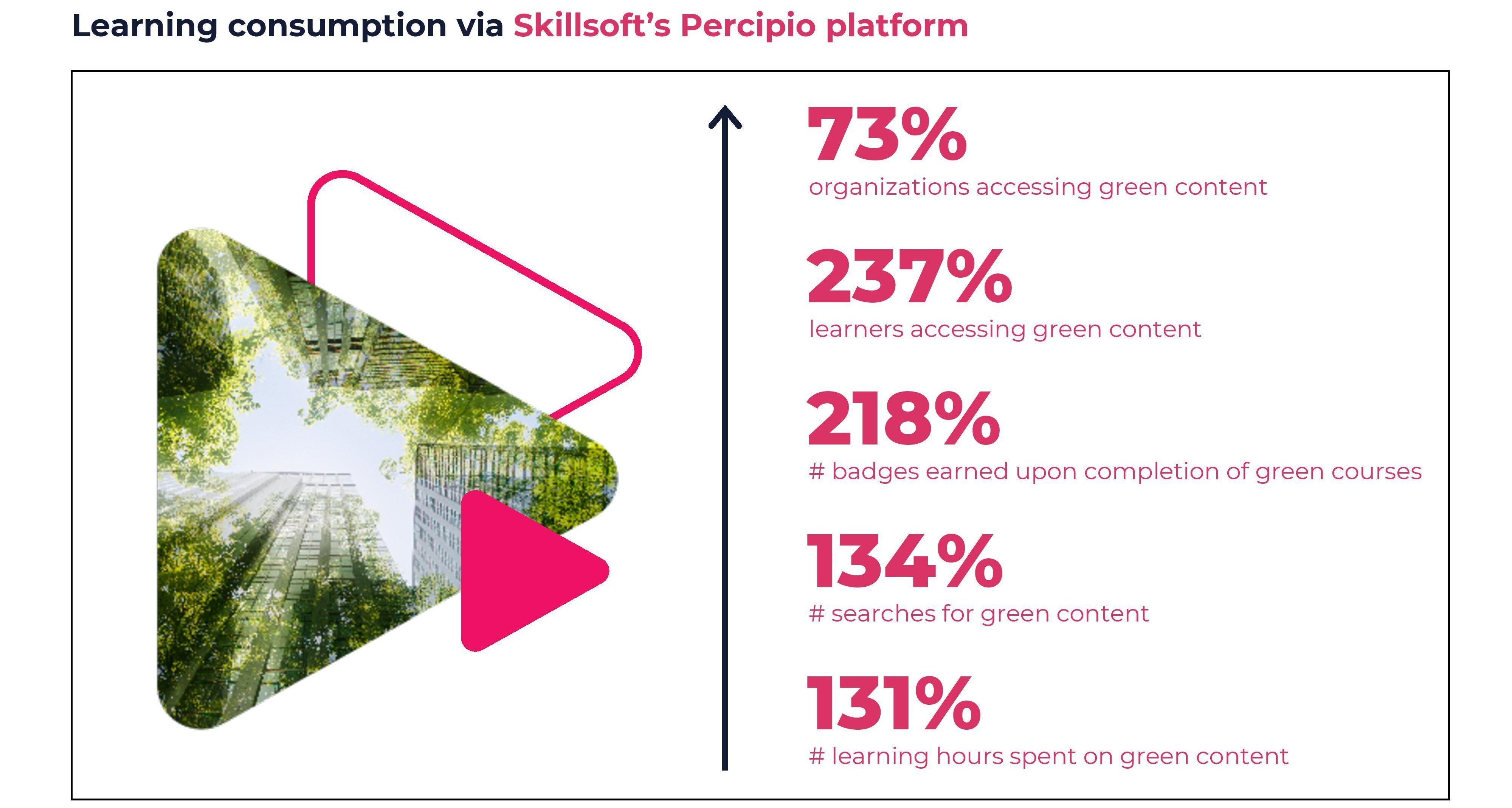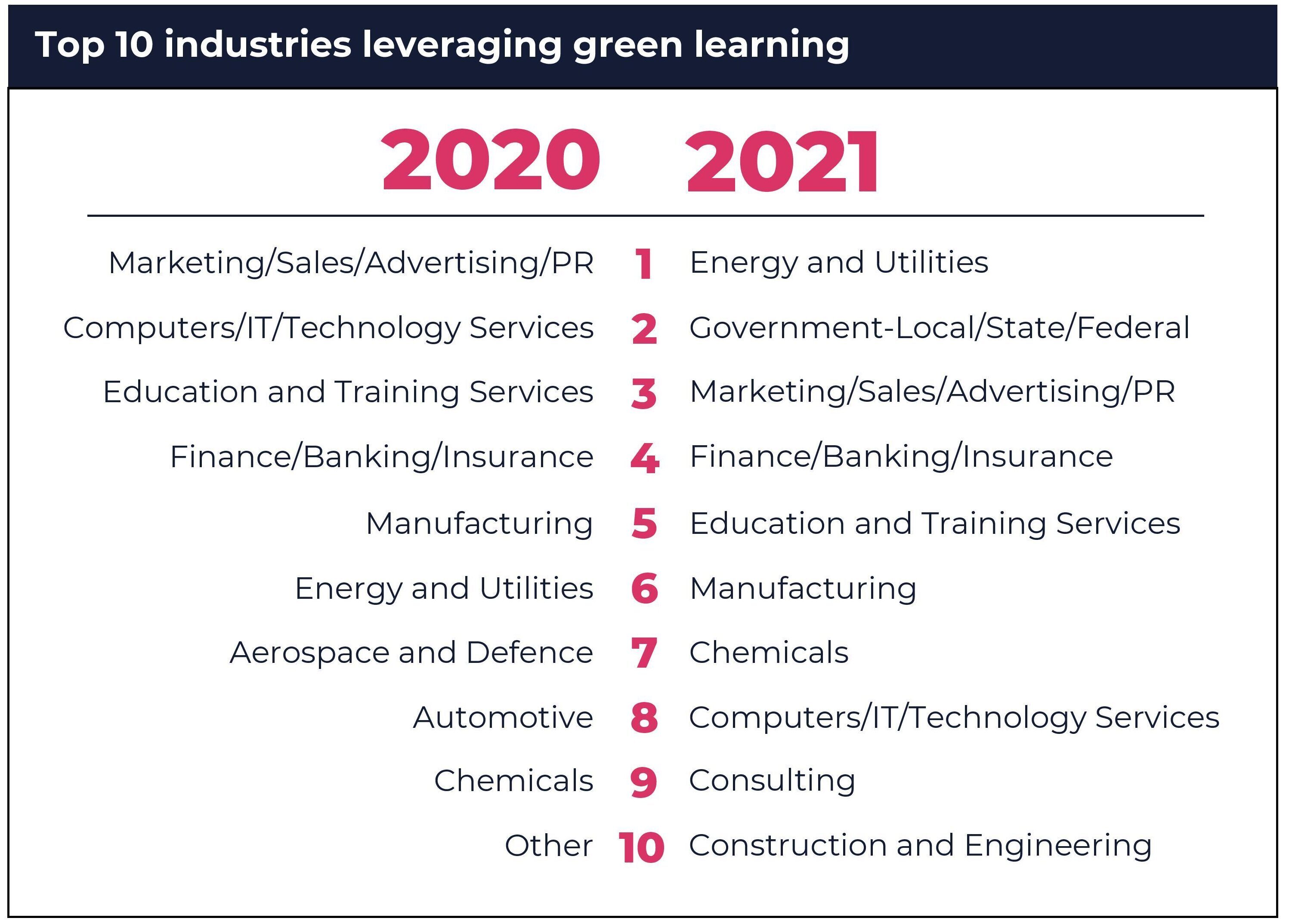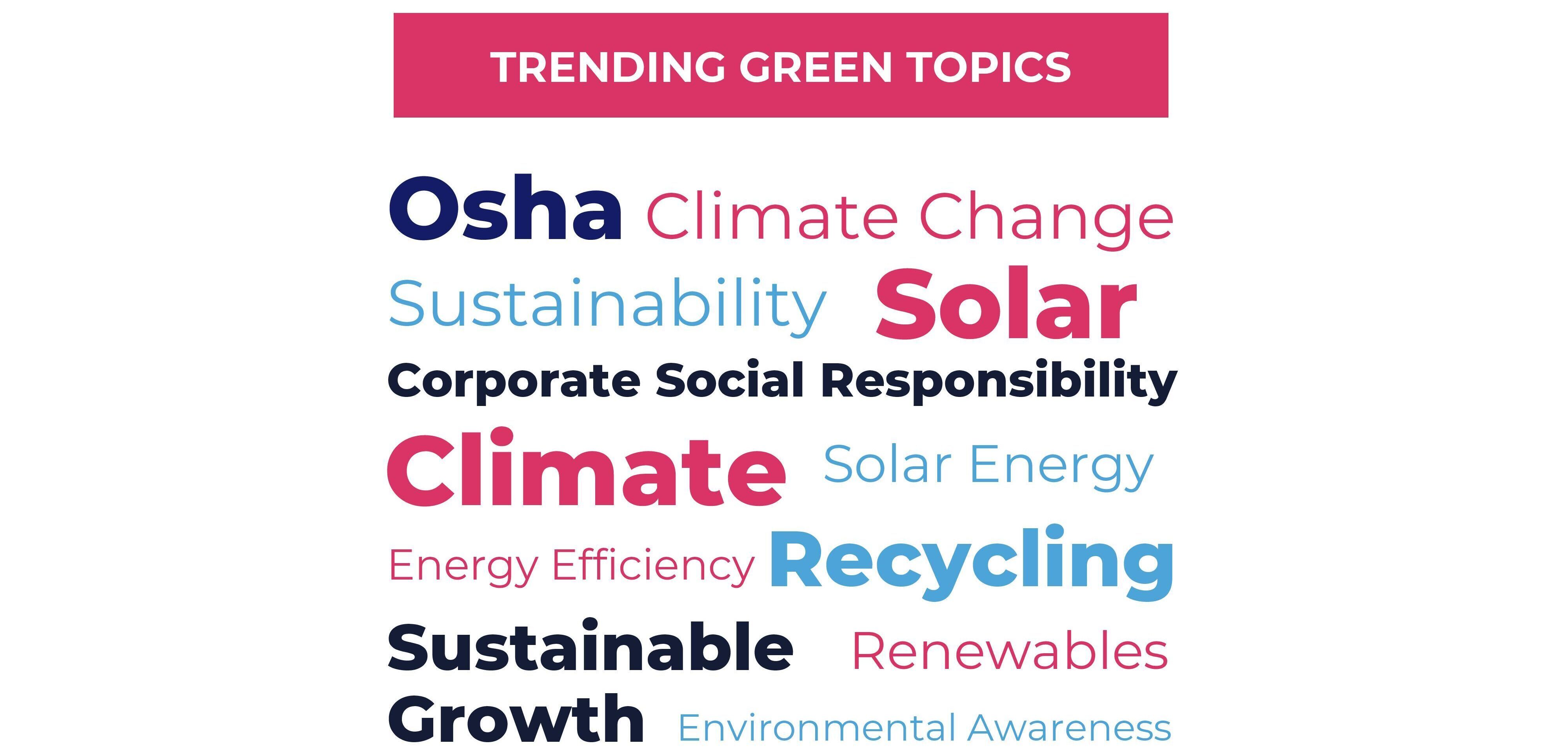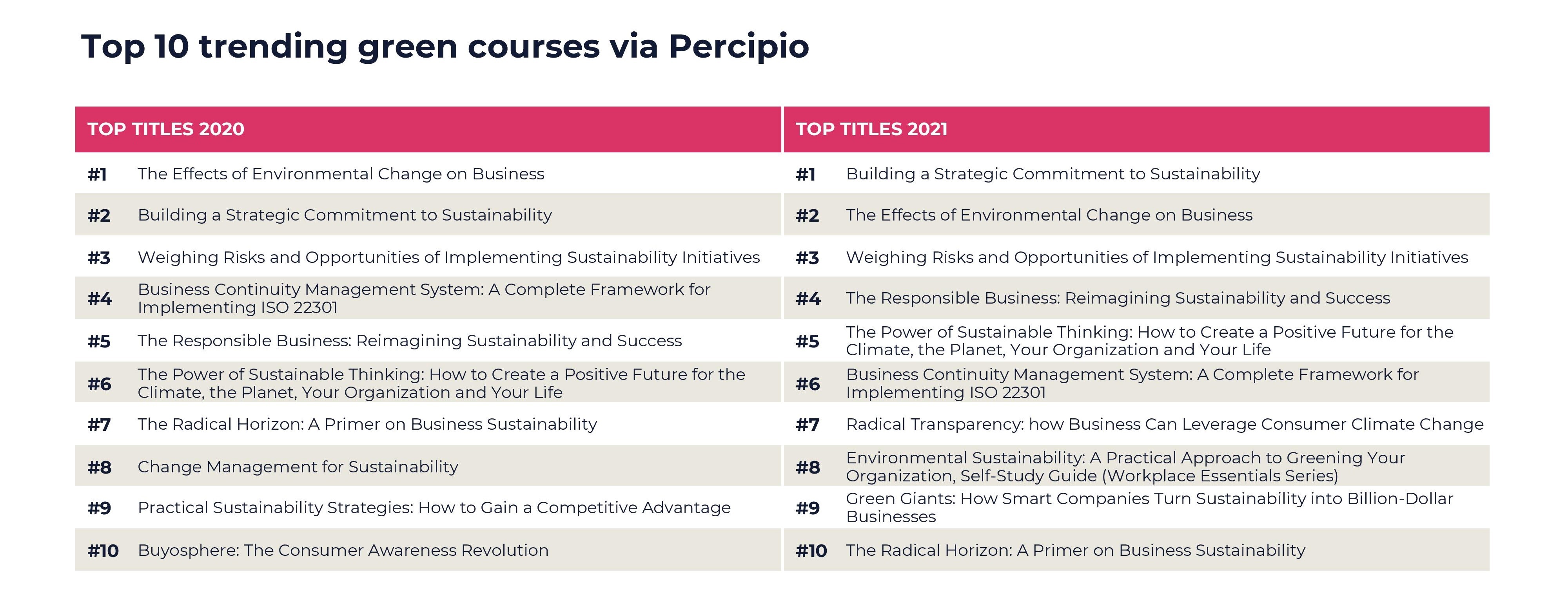
Earth Day 2022: New Data Finds Enterprise Learners Leaning into “Greening”
Sustainability is no longer a nice-to-have, but rather a strategic necessity and business imperative. Pressure is mounting for all organizations to be more socially, environmentally, and economically sustainable, with the ultimate goal of reaching a place of net-zero emissions.
Many organizations are taking note, evidenced with hiring for “green skills” growing globally by almost 40% between 2016 – 2021. A net-zero transition requires a transformation of the global economy – no small task, as McKinsey estimates that $9.2 trillion in annual average spend will be needed for physical assets by 2050. However, it is by no means insurmountable, and as Stephanie Roe, global climate and energy lead scientist at the World Wildlife Fund and a lead author of a new IPCC report, put it, “there is a really amazing role that we can play, not just as consumers, but also as professionals.”
The good news is that at Skillsoft, we’re witnessing first-hand a sharp rise in green skilling in organizations around the world. Digital learning is the driving force, both in helping to raise awareness about factors contributing to climate change and equipping workforces with the skills needed to operate in a “greener” manner. With Earth Day 2022 right around the corner, we sought to explore this further and better understand how organizations are leveraging learning to achieve more sustainable futures. After analyzing data from thousands of organizations and learners accessing Skillsoft’s learning assets related to sustainability, climate change, energy efficiency, and much more (we’ll refer to it as “green content” and “green courses” going forward), here’s what we found.
Learning – to care for our planet.
Organizations face unprecedented challenges surrounding the climate crisis and its environmental impact. To build more efficient and responsible economic and social systems, there must be a fundamental shift in beliefs and behaviors within today’s businesses. This starts at the top. For example, if a company decides to transition from fossil fuels to cleaner energy sources, there is an impact on the entire workforce. To be successful during these moments of change, companies and the leaders within need to ensure employees are not lost or left behind and equip them with the skills needed to adapt.
Skillsoft’s new data shows that organizations have made green learning and development (L&D) a much greater priority over the last 12 months. Comparing consumption of green learning content on Skillsoft Percipio in 2021 to the year prior, we observed:
- 73% increase in organizations and 237% increase in learners accessing green content;
- 218% increase in the number of badges earned by learners upon completion of green courses;
- 134% increase in the number of searches for green content; and
- 131% increase in total number of learning hours spent on green content.

Exploring the industries that have the highest numbers of learners engaging in, and completing, green content and courses, we see a bit of a shakeup in the list compared to the previous year. Energy & utility companies jumped five spots to become #1 on the list, while government organizations surged to the #2 spot after failing to appear in the top 10 in 2020. Interestingly, we also observed IT & technology service providers fall somewhat substantially (from #2 to #8), while construction and engineering companies took the #10 spot for the first time. The latter can likely be attributed to the rise in green building practices, which reduce the overall impact of built environments on human health and nature.

So, what is driving these changes? A multitude of factors. Organizations are being asked by shareholders, employees, customers, and partners to do more to reduce their carbon footprint. In tandem, the demand for employees with green skills to support these efforts is rising and opening new doors. After all, these skills now expand far beyond the traditional concepts of solar power and pollution prevention – everyone has an opportunity to work in a greener way.
Subscribe to the Skillsoft Blog
We will email when we make a new post in your interest area.
We now know sustainability content consumption is rising. But, where are learners spending their time and which green competencies are trending in the workplace?
Let’s start by examining where learners are beginning their journeys. Looking at the top trending green-related topics on Percipio, unsurprisingly, “sustainability” holds the #1 position by a strong margin. What is surprising, however, is the sheer volume of searches compared to the prior year – a 214% YoY increase to be exact. Sustainability is not the only trending term. “Environmental awareness” (200%), “climate change” (169%), and “sustainable growth” (100%) have also seen dramatic increases in search volume.

As our planet’s environment changes, so do its effects on the business world. From natural resources to energy sources to supply chains, businesses must adapt or be left behind. Further, climate change requires businesses to adopt sustainable practices to remain economically viable AND environmentally responsible.
When we analyze the green content and courses that Skillsoft learners are completing most, we see those related to leadership and business strategies dominating our top 10 list. Everyone expects more than just lip service at this point and leaders are working to wrap their arms around local regulations and global agreements that affect how businesses operate, as well as the steps they can take to create sustainable practices. Subsequently, Skillsoft’s course, “The Effects of Environmental Change on Business” appears in the top three most completed green courses for the second consecutive year, while “Building a Strategic Commitment to Sustainability” takes the number one overall spot.
Organizations committing to net-zero emissions or even to becoming incrementally more environmentally friendly require significant change, forcing leaders to weigh the pros and cons. As a result, for the second straight year, we see Skillsoft's “Weighing Risks and Opportunities of Implementing Sustainability Initiatives” course trending in the top three.

Learners are proud of “greening” themselves and want the world to know.
Skillsoft issues badges upon completion of certain courses and/or Skillsoft Aspire Journeys. And, once earned, these are commonly shared via social media channels and serve as personal records of achievements.
Whether to flaunt newly earned skills or simply show their involvement in helping to create a greener world, learners are measuring, recording, and celebrating their accomplishments at scale. For the top three trending courses we’ve identified, Skillsoft observed a 362%, 142%, and 111% increase, respectively, in badges earned on its platform in 2021 compared to 2020.
Information sharing is critical to advancing environmental awareness, and promoting accomplishments not only drives attention, but also piques others’ curiosity on how they too can become green champions.
These findings paint an inspiring picture surrounding enterprise sustainability upskilling. So where do we go from here?
We continue to be amazed by the curiosity our customers show and how learning transforms workforces in a time where adaptation has never been more important. Across the globe, we’re living in an era of unprecedented disruption. But with disruption comes opportunity – to embrace new ways of working, living, and thinking. The shift to a greener world of work requires an evolution in talent and skills.
The previously referenced IPCC report warns that we must take immediate action to avoid the most extreme dangers of climate change. Changing the way humans work, live, and operate can have a major impact on reducing emissions – as much as 40 – 70%. Whether someone is in administration, construction, or tech, we all have a role to play in this effort.
For all organizations, this starts with building a culture of learning and assessing areas of opportunity to operate in a more sustainable manner. Steps include:
- Understanding and defining organizational goals and knowing what skills are needed;
- Recruiting and hiring for specific skills where gaps may exist;
- Reskilling and upskilling the current workforce and seeking out effective, multimodal learning options; and
- Supporting ongoing skill development while recognizing and rewarding learning.
The time is now for business leaders to invest in upskilling current and future green talent and for the global workforce to do its part to learn individual green skills that, together, will drive collective change.





